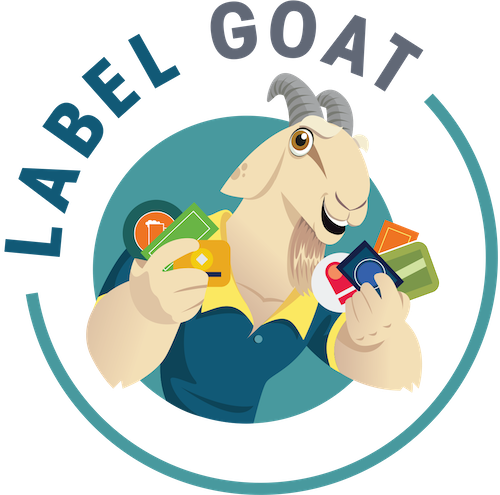Guide to the Requirements for Label Claims on Food Products
Published on May 21, 2023

Food labels are vital in aiding customers in making decisions about their food purchases. The Food and Drug Administration (FDA) and the US Department of Agriculture (USDA) have detailed legal requirements about what companies need to put on their packaging labels. These requirements have become indispensable for assisting customers in making informed decisions on their food purchases.
Some general requirements that FDA has for packaging labels are the name of the food, nutritional facts label, allergen disclosure, and so on. Similarly, the USDA also has some strict requirements for the packaging of foods it regulates, including safe handling instructions and net weight statements.
Besides all these regulation-mandated components, food companies regularly tend to place various claims about their product on their label. Some common ones include claims about the nutritional quality of the product, such as “low in saturated fat”, and claims that a food product is organic. Claims like these play a significant role in customers’ purchase decisions. For this reason, the FDA and USDA have also placed regulations on what kind of claims food companies are allowed to put on their products.
If you’re a customer looking to be more conscious about your food purchases or run a small food products company required to abide by the laws related to food labels, here is a basic guide to the label claims on food products.
False and Misleading Claims
Food companies can use all sorts of claims to win customers’ trust and boost their sales, and not all of them are specifically defined or regulated by the FDA and USDA. So, as a general rule of thumb, the law forbids food companies to make any label claims that are false and misleading.
Nutrient Content Claims
While food labels are required by law to have a nutritional facts label, companies also like to put attractive designs for the customer that make various claims about the product’s nutritional content. These are possibly the most common label claims on food packaging: claims about a product is low on undesirable nutrients like fats and sugars and high on desirable ones like vitamins and minerals.
Products that use nutrient claims with words such as “reduced”, “low”, and “high” utilize these label claims based on the fact that they have a legally defined amount of nutrients per serving.
Meanwhile, words such as “light”, “fortified” and “reduced” are considered relative claims and have to specify which food it is being compared to.
The FDA also has exact specifications for claims about fat and cholesterol contents. Companies can label their products as “skim” or “fat-free” if they have less than 0.5 g of fat per serving and “cholesterol-free” if the product has less than 2 mg of cholesterol per serving. A “low-cholesterol” claim requires the food product to have less than 20 mg of cholesterol per serving. Similarly, “reduced fat” is a relative claim that can only be made if the food has at least 25% less fat than a reference food, and a “low fat” claim requires that the food have 3g or less of fat per serving.
There are also exact regulations for the use of the words “high”, “more”, and “good source of” in label claims. A company may claim that its product is a “good source of” an ingredient if the food contains between 10 and 19 percent of the reference daily intake. The term “high” requires that a product has 20 percent more of the same nutrient than a reference food at the same serving amount. Similarly, to use the word “more”, the food product must have at least 10 percent more of the same nutrient than a reference food at the same serving amount.
Claims About Structure/Function
A clever way a food product creates the impression of health in its packaging claims is by simply stating the effects of a nutrient on the human body. It can be as simple as “Vitamin E maintains a strong immunity.” Claims like these increase the perceived importance of a nutrient in the specific product, whether or not the product has a greater-than-normal quantity of that particular ingredient.
Since label claims are so common in food packaging, the FDA has also set up some rules. A food company doesn’t require any pre-approval from the FDA to make such claims. However, they do have to put in the following disclaimer if they choose to do so:
USDA Organic and Grades
Products regulated by USDA use a whole other set of claims to make themselves more appealing to customers. The organic claim is highly regarded, and the USDA strongly regulates its use since such a claim directly affects its production method. The Organic Foods Production Act (OFPA) defines the parameters with which a product has to be produced to be deemed eligible to be labeled as organic. Companies have to abide by this act and get certified by USDA’s National Organic Program to make the organic claim on their food products. Alternatively, companies can also get certified by their state’s organic program, which also meets the same minimum requirements as the USDA program.
The USDA also allows agricultural products to receive special grades as a voluntary mark of the product’s quality. In other words, grades are not a compulsory label component and can be requested voluntarily by a company to boost its quality perception among customers. The USDA Agricultural Marketing Service gives them out, and they are generally taken by meat and poultry producers.
Third-Party Certifications
Several third-party organizations offer certifications that companies place as label claims. These independent organizations have rules and standards and measure things, including transparency and humane practices. Some popular third-party certifications preferred by food producers and manufacturers include Fairtrade International and Certified Humane. These certifications give food products additional reliability in customers’ eyes.
While the laws regulating label claims on food products are many and complex, they can be divided into some specific areas. A general knowledge of the requirements can help customers make a better purchase decision.


